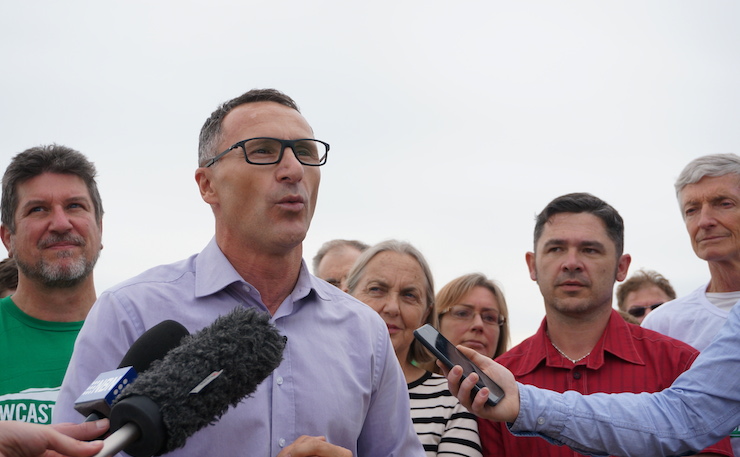While the march on Melbourne continues, the Greens suffered a poor result in two key electorates across the border, despite a large spending boost. Is NSW too conservative for the party, or has it lost its way in the state? Max Chalmers reports.
For Richard Di Natale’s party, the outcome of the 2016 federal election looks decidedly different in the nation’s two largest cities.
In Victoria, the Greens made significant advances in inner city electorates, intensifying the pressure on besieged Labor – and in one case Coalition – MPs. Although the party will likely not be able to brag of any new conquests by the time counting is completed, the foundations of Labor’s defences have been blasted through almost entirely, leaving a number of MPs with a slender buffer to defend next time around.
In Batman, a swing of just under nine per cent couldn’t quite dislodge Labor’s David Feeney, who finished second on primaries behind Alex Bhathal, but overtook the Greens candidate on preferences. In neighbouring Wills, a similar result put Samantha Ratnam in striking distance of her Labor opponent, while Jason Ball saw an almost nine per cent increase in the Greens’ primary vote in Liberal held Higgins, and Steph Hodgins-May increased the party’s primary vote by four per cent in another three-way race in the seat of Melbourne Ports.
There is severe disappointment that Bhathal in particular – who first contested Batman in 2001 – couldn’t knock off Feeney, but the consistent shift across the seats surrounding Melbourne is a positive sign.
The same can’t be said for the capital to the north. While the change to the Greens’ senate vote in each state was only minor, lower house seats tell a different story.
In the seat of Sydney, the Greens increased their primary vote by just 0.1 per cent, stalling at 18.5 per cent. That total is less than they received in Brisbane, and only just ahead of the first preference tallies in Fremantle and Perth.
Far worse, however, was the result in Grayndler, the nation’s smallest electorate, which lies just to the west of the city.
It is understood that the NSW Greens budgeted $250,000 to get as close as possible to toppling powerhouse Labor left MP Anthony Albanese, a man with a reputation for brawling with Tories who showed during the campaign he’s happy to throw a right hook as well. That figure is up from the $80,000 allocated to Grayndler in 2013, and is $60,000 more than was allotted to take on Tanya Plibersek in Sydney, according to figures seen by New Matilda.
On that return, the Greens saw both their primary and two party preferred vote in Grayndler go backwards, easing in the wrong direction by less than one per cent. Jim Casey, a charismatic firefighter and unionist, finished third on first preferences behind Labor and the Liberals.
In lower house seats the Greens moved their vote to 12.6 per cent in Victoria, while in NSW they advanced only slightly, to 8.6 per cent.
Melbourne MPs ‘An Embarrassment To Labor’
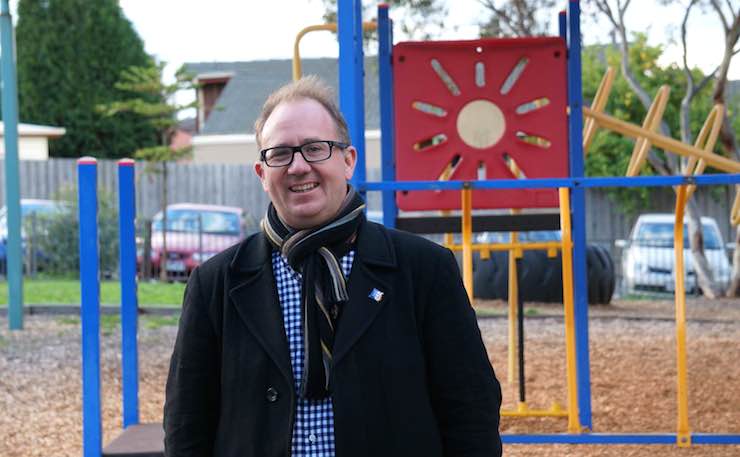
The first explanation proffered by Greens sources in NSW was the contrasting standing of Labor’s inner city MPs.
Plibersek and Albanese are formidable opponents who have a shared 38 years of incumbency and are regularly singled out as potential leaders. They have a national profile. As Albanese’s campaign showed, this means they can whip-up broad and often very positive exposure.
Those who campaigned in Sydney and Grayndler said the pair have been elevated to the level of celebrity. One Labor staffer noted the need to factor in the “cult of personality” when setting up events for Plibersek, while Greens staff described voters flocking around Albanese at polling places. “You really pity anyone who has to run against Tanya Plibersek,” the Labor source said.
According to Casey, there was a feeling from the beginning that if Albanese contested the seat he would be very difficult to overcome. The Greens campaign took a hit when the MP decided not to skip out and run in the redistributed seat of Barton, something a number of papers had confidently predicted he would do. There was another jolt when the Liberals announced they would preference Labor, and Casey said his camp experienced a “hiccup” in their volunteering campaign as a result. Momentum is important to insurgent parties like the Greens, and moments like these constantly deprived the Grayndler team of the commodity.
James Ryan, who headed up the party’s NSW campaign, also argued that Labor had still managed to significantly outspend the Greens in the seat. “In the face of a massive spend by Labor and the tantalising effect of the possibility of Labor winning government our Green vote did not increase in Grayndler despite our strong campaign,” he said.
Meanwhile, around Melbourne, Labor right faction stalwart David Feeney appeared to be sabotaging his own campaign in Batman, popular Wills MP Kelvin Thomas retired after 20 years, and Michael Danby continued to produce the signature brand of Labor right bombast that has assisted him in collapsing his party’s primary vote from the mid-40s to the just 27.4 per cent in Melbourne Ports.
Greens Senator for NSW Lee Rhiannon was one to draw attention to the disparity in the strength of opposition, describing Feeney and Danby as “uninspiring characters who were an embarrassment to their party.”
Rhiannon, the sole Greens Senator for the state, was returned at the election despite a small swing against her party, and Ryan argued this had been the party’s major goal at the poll.
Along with this argument, a number of those in the NSW Greens suggested their state was more hostile to the party’s progressive agenda than Victoria.
Julie Macken, Casey’s media advisor, pointed to relative numbers at climate change and refugee rallies in each state. “Melbourne flogs us every time,” she observed.
But according to Ben Raue, a psephologist who has previously done work for the NSW Greens and now assists GetUp and Guardian Australia, the demographics in Grayndler and Sydney favour the Greens more heavily than the seats surrounding Melbourne.
While Raue put Sydney and Grayndler in a similar category to the already-snatched seat of Melbourne, he noted that Greens support falls away as you move north through electorates like Batman and Wills, a reflection of the demographic challenge faced by the party in seats that sprawl further from ‘000 postcodes.
The greens are spreading – booths won by 1st preference. @mrcjohnston @myriamrobin @michellegriff @mickresearch pic.twitter.com/VMierL942m
— Tim Wardrop (@timwardrop) July 7, 2016
Interestingly, the Greens’ vote also increased in a number of regional electorates in NSW, and the only place the NSW party saw a swing similar to those around Melbourne was in the north-eastern seat of Richmond, another electorate with a very mixed base for the Greens.
Differnt States, Different Parties
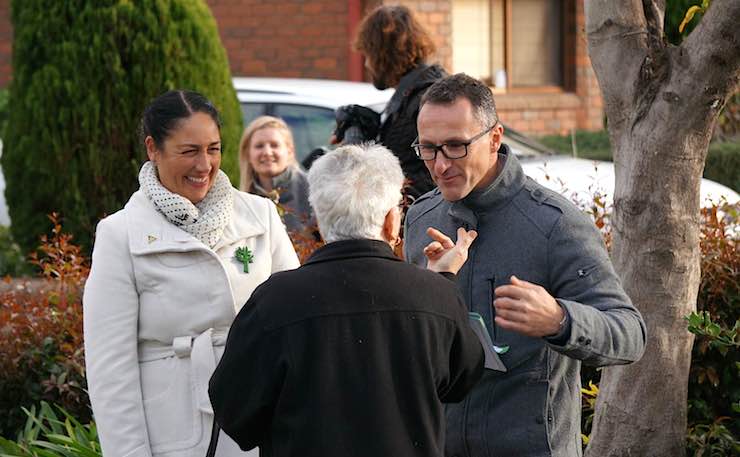
Aside from the immediate political environment, it has also been pointed out in the wake of the result that the Greens organise in a very different manner in NSW and Victoria.
NSW is decentralised, with local groups given total control over any funding that flows to them, the power to control how preferences are allocated on How-To-Vote cards in their electorate, and significant power to halt changes to the party’s central platform. Local groups send representatives to the State Delegates Council, where decisions are made on a consensus basis. Decisions can go to a vote, but need a super majority of 75 per cent support to get over the line.
This makes internal machinations slower and more complex. Critics also say – much to the chagrin of those who support this system – that it renders the party unprofessional. One person who was more favourable to the status quo still warned that the party was losing good staff to progressive organisations offering a stable job between elections.
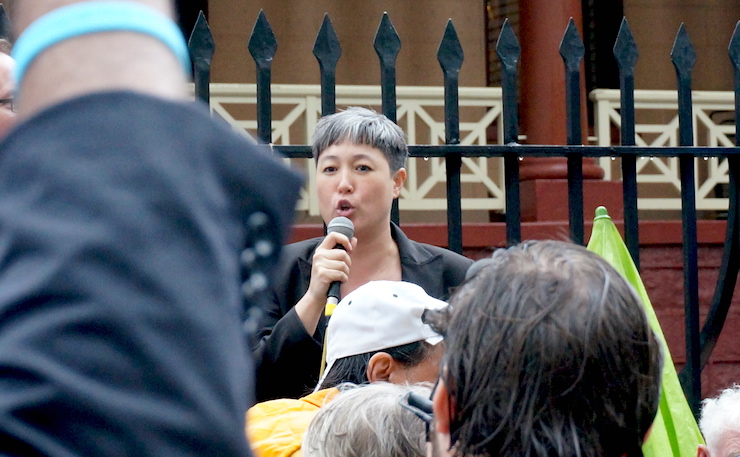
In defence of the model it was pointed out that a number of strong, locally run campaigns saw the Greens take their tally of lower house seats to three at the 2015 NSW state election. The state campaign had been criticised as dysfunctional, but the decentralised approach enabled the likes of Jenny Leong to run effective grassroots battles. (Leong scored a 10 per cent swing on primaries in the new seat of Newtown, comprehensively outgunning Labor MLC Penny Sharpe).
Rhiannon, who was careful to clarify that she was not criticising the way other states operate, noted that the NSW party had grown out of a series of local branches.
“Why are our local groups so strong in NSW? Before we had the NSW Greens, before we had the Australian Greens, the very first party in Australia to use the name ‘Greens’ was the Sydney Greens. Then you had the other Greens, the Eastern Suburb Greens, Newcastle Greens,” she said.
Rhiannon said she had seen the frustrations with the system up close but that the consultative approach ensured the party could build in the long-term.
“I know people try and typecast me, you know? ‘You’re just old fashioned’, ‘you’re stuck in the old ways’, blah blah blah. But I respect that to change organisations, you also need to respect how organistions work. You’ve got to learn what the good bits are,” Rhiannon said.
“So yes, there’s a heap we could do better in terms of how the campaigns run; what we focus on, what we talk about. I think what we talked about is a good one.”
Victoria, by contrast, has a more centre-heavy structure, including a full-time campaign staff of nine people who work between elections. Their number swells to 50 at the height of a campaign. Money flows to the centre then back out. Campaign skills and techniques are more easily transferred from one bout to the next.
One NSW member said this left Victorian local branches “screaming blue murder” as their views were discarded by campaign HQ, but a senior Victorian organiser saw things differently, and argued the state has a “centralised professional campaign group and decentralised local campaigns.” They said the campaign had been thoroughly consultative, and that the state-wide push had not been sacrificed by concentrating on the seats around Melbourne. On election day, the Victorian Greens mobilised around 6,000 volunteers, compared to 4,500 in NSW.
Mobilising volunteers is one thing, but it doesn’t hurt to have more cash on hand either.
The NSW party is at a self-imposed disadvantage here thanks to strict rules about donations. Unlike Victoria, it won’t take money from for-profit companies at all, and limits donations from individuals to $2,500. Victoria has a vetting process for donations over $1,000, but New Matilda understands they are rarely – if ever – turned down.
While a boost in funds to Casey’s campaign failed to see the Greens vote in Grayndler rise, the candidate made an obvious observation. “Of course more money would have meant more material, and this would have helped,” he said.
That’s not so say Casey or others in NSW want these restrictions to change. The party has debated the details of their donations policy but the focus has always been on tinkering – especially in regards to funds from unions – rather than overhaul. In a state where ICAC often serves as the most effective opposition to a government it’s not hard to understand why such a position is seen both as principled and pragmatic.
Macken was philosophical when reflecting on how the party’s internal machinations might impact campaigning.
“Democracy is brutally hard work,” she said. “It makes you really tired. It’s full of more losses than wins and it’s not easy or instant.”
“But that is the nature of building movements and building relationships. It’s the nature of true democracy. And it’s bad news if you want big wins instantly.”
Divisions In NSW
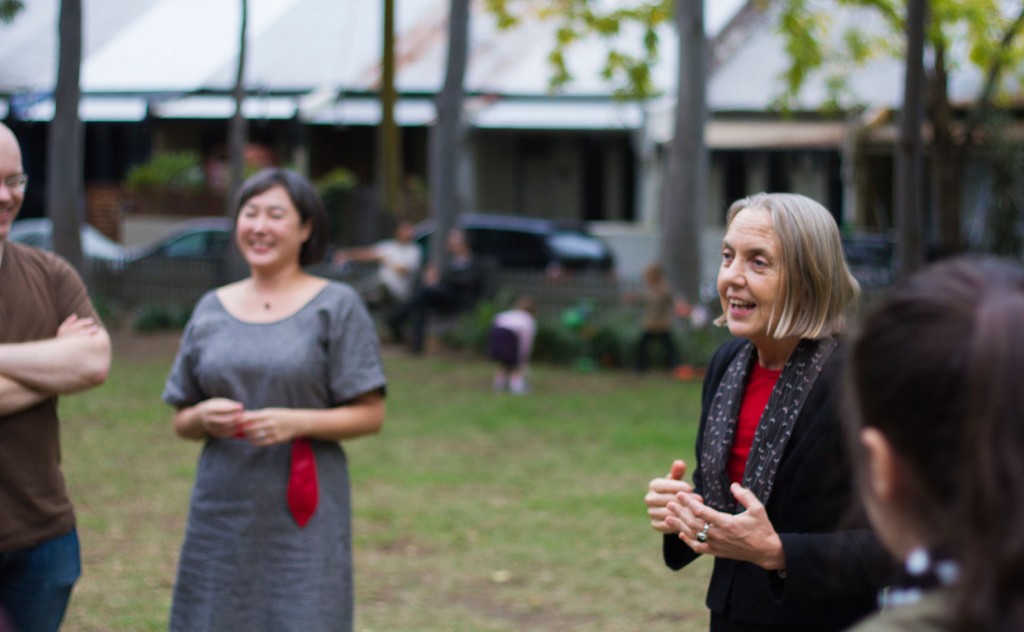
Somewhat confusingly, internal ruptures in the Greens NSW have also recently given rise to accusations that the party is too centralised. Just as the election campaign got humming, a number of staff quit the NSW Greens’ influential Committee of Management after Executive Officer Carole Medcalf was removed. Medcalf and her camp argue she was mistreated, while those still on the Committee say she was forced to leave after “serious misconduct”.
Chris Harris, one of those who departed during the row, told New Matilda he is a big fan of Richard Di Natale, and wants to see renewal in the NSW Greens.
“I think our election result was pretty poor in NSW. We haven’t grown. We’ve got a lot more members but our vote hasn’t grown as I think it should be,” Harris said.
The former NSW Greens treasurer and City of Sydney Councillor said this was not a veiled criticism of Rhiannon, who he acknowledged had been a good advocate for the party.
“I have no personal criticism of Lee Rhiannon for her efforts, but there is a power structure in the party [and it]has long been a dominant power structure in the party. Lee is part of that no doubt.
“I don’t think that power structure being maintained is in the longer term interest of the Greens NSW.”
Those on the other side of the divide fire back that, having failed to win support for his ideas, Harris became a critic of the system.
Interrelated to these divisions is one of ideology, a fracture that is being tested by Di Natale’s perceived move towards the political centre.
When the Financial Review reported that “recriminations” had begun after the election results, one Federal insider told the paper the NSW campaign had been too “bolshy”. While the Greens do not have a formal factional system like Labor, that was taken as a rebuke of those on the left of the party, who are worried Casey’s result will undermine their ability to push more ardently left-wing candidates and causes in the future. Harris, for one, criticised the “smash the system” mentality among some in the party. (He also rejected the idea that the split is along left-right grounds, though many others refer to it in those terms).
Whether disunity in the party was a factor or not at the election, the results will certainly feed back into that internal dynamic.
Max Phillips, another former Councillor aligned to state MP Jeremy Buckingham, who is generally thought to be on the other side of the divide to Rhiannon, said the campaign in Grayndler should have taken the gloves off and come directly at Albanese’s image as “a good guy in Labor.”
“The Victorian Greens have proved that our policies can appeal to a significant proportion of an electorate at a federal election,” Phillips said.
“Our good regional results show that appeal is also broadly based. The question for NSW Greens is how we campaign and do politics to harness that appeal for our Senate vote and to really challenge in federal lower house seats.”
The Greens in NSW will soon be conducting their own internal reviews of the poll, and making preparations for their true litmus test. Adam Bandt was able to sneak home in Melbourne after the seat was left open by the retirement of Lindsay Tanner and the future departure of Plibersek or Albanese will also provide a rare opportunity for the Greens to change their luck in the House of Representatives.
Disappointed for now, Casey is optimistic about the future.
“Either [Albanese] retires, opening the space for us, or he does a John Howard and stays too long. Both scenarios will work for the Greens,” he said.
Donate To New Matilda
New Matilda is a small, independent media outlet. We survive through reader contributions, and never losing a lawsuit. If you got something from this article, giving something back helps us to continue speaking truth to power. Every little bit counts.

